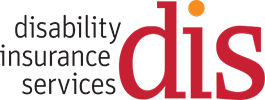
If you’re not using social media effectively, you could be missing out on an audience of 5.24 billion people. That’s how many people use social media, according to Backlinko. Even though not all of these people will see your posts, even a tiny piece of a pie that massive is a big deal. Get your slice with a social media marketing strategy that works for 2025.
New Social Media Platforms
The number of social media platforms keeps increasing. Facebook, Instagram, Twitter/X, and LinkedIn are still big, but there are also newcomers like Bluesky and Threads. You may be wondering if you should give these newer platforms a try. There are four main things to consider before you decide.
- User base. Bluesky has a 35.98 million users and 4.1 million daily active users, according to Backlinko. That may sound impressive, but it pales in comparison to some of the bigger social media platforms. Backlinko says X/Twitter has more than 200 million daily active users, while Facebook has 2.11 billion daily active users.
- Engagement. The number of users on a social media platform doesn’t matter if none of those users ever see your posts. Many social media platforms use algorithms that may make it hard for smaller accounts to gain engagement. According to Hootsuite, many social marketers report better engagement on Bluesky compared to X/Twitter.
- Demographics. If you’re trying to sell disability insurance, being active on a social media platform that’s popular with teenagers isn’t the best use of your time. LinkedIn may be a good option because it focuses on workers. Facebook is also a good option because it’s popular across demographics.
- Preference. According to Pew Research Center, the most popular social media platform is actually YouTube, with 85% of U.S. adults saying they use it. That’s great if you want to create and post videos but less helpful if you’re not planning to post videos. Use the social media platforms you’re comfortable with.
How many social media platforms should you be on? Although it may seem like more is better, that’s not necessarily true. Spreading yourself too thin may end up creating a lot of work for little reward. You’re probably better off focusing on one or two platforms and working on building an audience. You can always add another platform later.
Reassess and Adjust
Since social media platforms are always changing their layouts and algorithms, you’ll need to adjust your social media strategies over time. Pay attention to your engagement rates, and mix things up if you’re not gaining the results you want.
It’s helpful to know what a realistic goal is. According to Hootsuite, the average engagement rate for financial companies in the first quarter of 2025 was:
- 8% on Facebook
- 1% on X/Twitter
- 2% on LinkedIn
- 8% on Instagram
Being Active on Social Media
It’s not enough to have an account – to gain anything from social media, you need to have an active presence.
- Keep your profile current. You need a profile picture and a bio. Some platforms (including Facebook and X/Twitter) also let you customize your profile with a header image. You can use Canva to design a header. Also make sure you have a link to your website. If you have multiple links to include, use LinkTree.
- Post consistently. Depending on the social media platform, you should be posting weekly or even daily. According to Hootsuite, the optimal frequency is once to twice a day for Facebook and LinkedIn, twice to three times a day for X/Twitter, and three to five fives a week for Instagram. If keeping up with posting is too much work, schedule posts in advance.
- Engage with others. If you don’t engage with other users on the platform, why should you expect them to engage with you? Repost, like, and comment on content you find useful. Another strategy is to ask questions – just make sure you respond to the replies.
- Keep it professional. Social media often gets political and controversial – and sharing divisive posts is a good way to alienate half of your audience.
- Use visuals. Since posts with videos and images often receive more engagement, it’s good to include them – but don’t make the mistake of infringing on other people’s copyright. You can license images from sites like Adobe Stock.
Need something to post? DIS has social media posts with highly-engaging visuals that you can use to spread the word about disability. They’re ready for you to share on your social feeds. Download them here.
Need more help? Check out the DIS social media guide.
